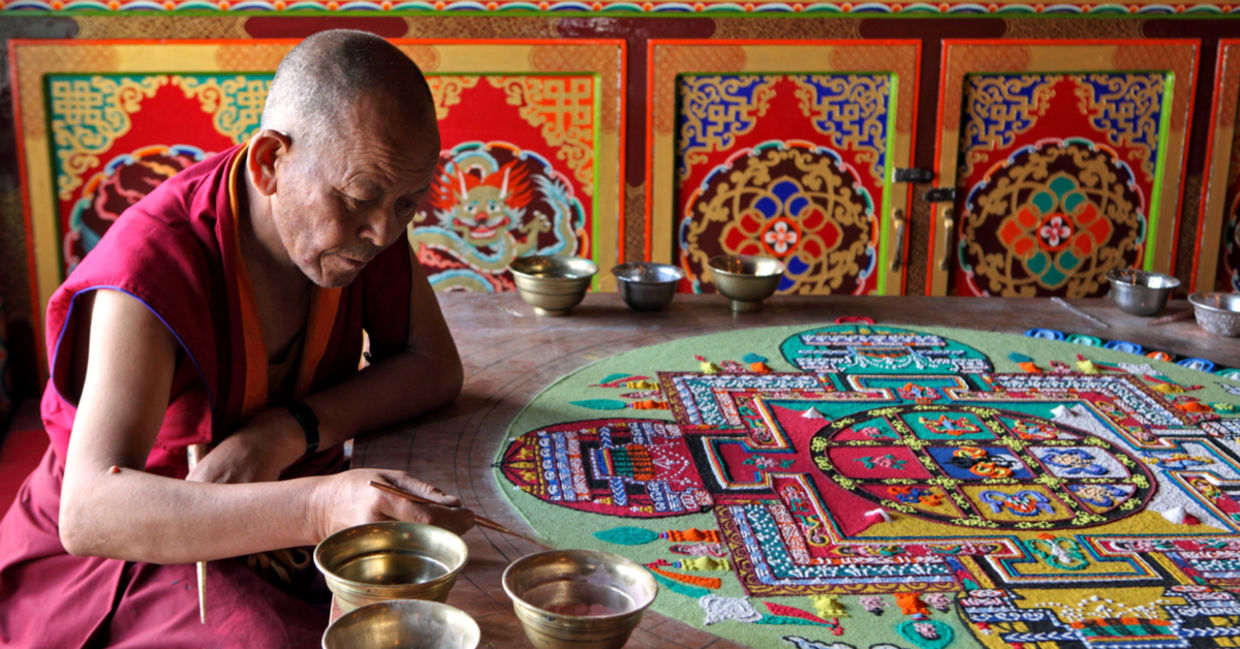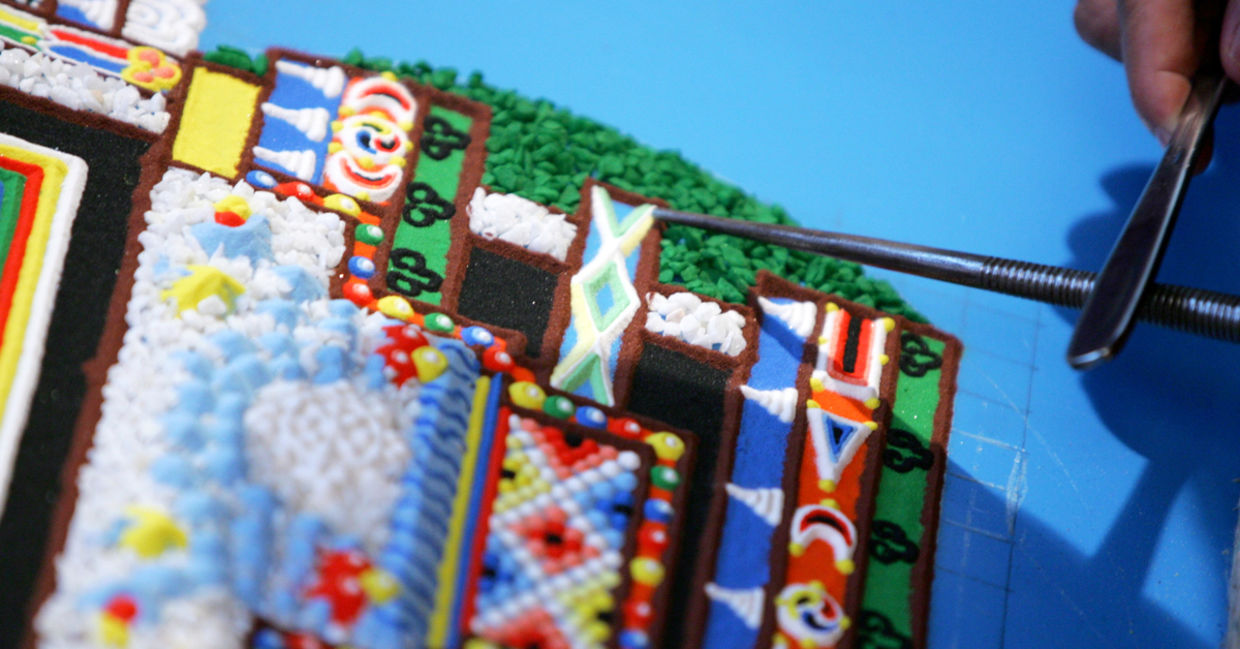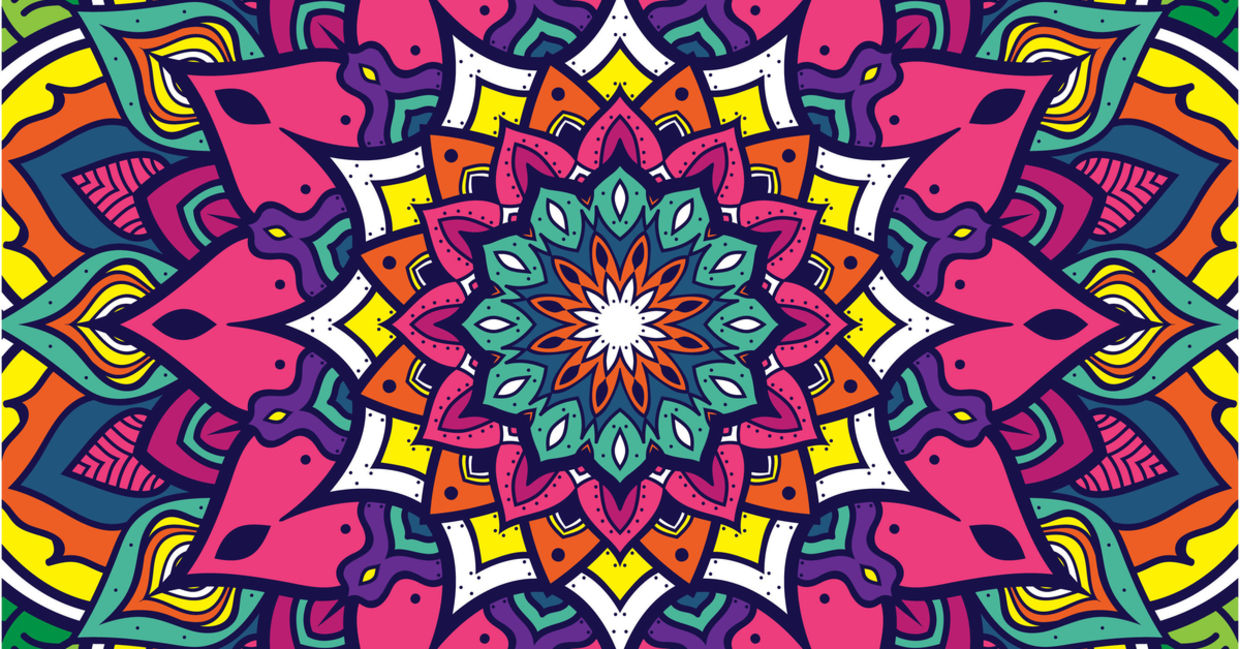
(Vladimir Melnik / Shutterstock.com)
If you visit Tibetan monasteries in the Himalayas, you will likely come across a team of monks chanting in deep concentration while hunched over a large, colorful pattern. With a closer look, you’ll notice that each monk creates a design using pieces of sand, which they place precisely grain by grain.
These sacred sand “paintings”, called mandalas, originated in India over 2,500 years ago, according to The Huffington Post, and today, monks from Tibet and other parts of Asia continue the centuries-old practice.
Buddhist monks from Tibet produce breathtaking sand mandalas that reach upwards of five by five square feet. The laborious task produces stunning cosmograms made of vivid colors and patterns said to represent the ideal universe, perfectly balanced.
The monks spend days or weeks creating such beautiful pieces of art. Then, in a sweeping motion, they completely destroy the entire thing before releasing every last grain of the colored sand into flowing water.
How, after all that hard work, can they simply destroy something that took them hours to create? Sweeping the mandalas reminds them of the nature of existence: nothing is permanent. The ritual teaches how to cherish the present moment through mindfulness.
The Healing Power of Mandalas
The precision and patience of creating a mandala require deep concentration, a way to train the mind to focus. Beyond meditation, sand mandalas contain powerful healing energies. As the monks make the mandalas, they chant and meditate to evoke the positive vibrations residing within the sacred patterns. This energy has healing power that extends to the entire world -- further realized by releasing the sands into flowing water.
Mandalas come in many forms, mostly originating throughout Tibet, India, Japan, China, Nepal, and Bhutan. Some designs represent the cosmos and sacred realms of the universe. Others may represent the elements: earth, air, fire, and water. Lotus mandalas illustrate the flower iconic in Buddhism symbolism while yantra mandalas depict yogic postures and routines from Vajrayana Buddhism.
You can find examples of mandalas all across the globe, from ancient scrolls in Asia all the way to art exhibitions in the halls of the Met Museum in New York made from various materials. Textile and thread-cross mandalas reveal intricate patterns all created from colored threads. Meanwhile, the Dungkar and Piyang caves in Tibet contain famous wall paintings and murals of mandalas.

(aijaphoto / Shutterstock.com)
Mandalas for Beginners
Of course, these mandalas require highly skilled artists to produce. But you can certainly find mandalas for beginners to appreciate this ancient mystical art form. Online tutorials or coloring books offer more simplistic ways to draw a mandala.
Monks often draw a preliminary sketch when creating complex mandalas, which they then outline and embellish with paint, dyed sand, and other mediums. You can mimic their system by tracing a mandala onto a piece of paper before adding your own creative touches.
Remember that the mandala offers far more than an art project. Coloring mandalas has tremendous health benefits. You’ll certainly enhance your ability to focus, and doctors recommend mandalas for quitting smoking, reducing stress, or when coping with an illness.
How can you reap the rewards? As you create your patterns, use this as an opportunity for active meditation. Breathe slowly and deeply. As your mind stills, try to focus your attention on the mandala. As your thoughts wander, bring them gently back to the mandala. Through this simple practice, you’ll bring stillness to the mind and body... and who knows? Perhaps you’ll discover hidden secrets of the universe, just like the monks.

(SoulGIE / Shutterstock.com)







